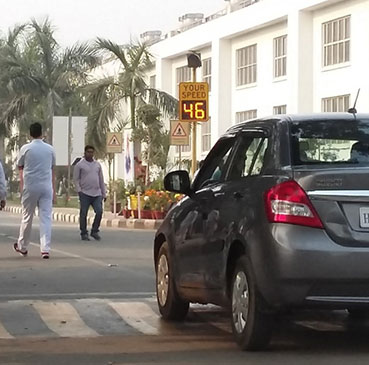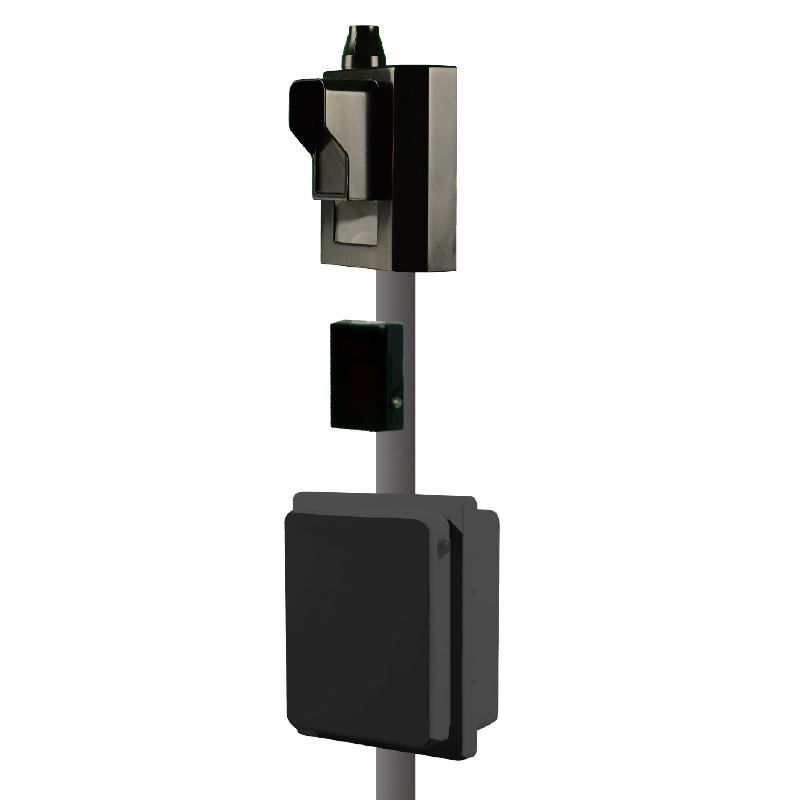SafePace Guardian Speed Cameras for Safer City Road
The use of speed cameras dates back to at least 1905, although a similar one to what is used on the roads today was invented in 1958. Since then, these cameras have come a long way.
 From helping a rally driver to improve his lap times on the race track, to now helping traffic personnel in enforcing road safety rules on speeding motorists, speed enforcement cameras have now become an important and an almost inseparable part of the motoring landscape.
From helping a rally driver to improve his lap times on the race track, to now helping traffic personnel in enforcing road safety rules on speeding motorists, speed enforcement cameras have now become an important and an almost inseparable part of the motoring landscape.
When a speed camera system detects a traffic violation, it takes a photo of the violator. These pictures capture the following information about the offending vehicle: color, make, model, and license number plate, date and time of the offense, direction of travel, speed of the vehicle vs. the posted speed limit, lane the vehicle was traveling in, location of the camera, and other specified parameters.
 The presence of traffic enforcement cameras on the streets and roads has led to a lot of discussions and prompted much debate about the purposes they serve. But whether drivers love them or hate them, there is enough evidence to suggest that the use of speed cameras does make motorists slow down significantly. This helps reduce road crashes and fatalities to quite a large extent.
The presence of traffic enforcement cameras on the streets and roads has led to a lot of discussions and prompted much debate about the purposes they serve. But whether drivers love them or hate them, there is enough evidence to suggest that the use of speed cameras does make motorists slow down significantly. This helps reduce road crashes and fatalities to quite a large extent.
Drivers who drive within the posted speed limit have nothing to fear. But in order to warn and penalize violators who speed and tend to blame others on the road for the mishap, traffic officials have had to depend on speed enforcement cameras to discipline motorists.
There has been a boom in the use of traffic enforcement cameras worldwide, especially since the late 1990s. Many drivers are caught speeding by cameras each year. Despite the debate over whether speed cameras are a revenue-generating system, the fact that their presence can act as a deterrent for reckless driving cannot be ignored.
According to the World Health Organization (WHO), traffic accidents kill 1,300,000 people each year and are one of the top 10 causes of deaths worldwide. And as per the National Highway Traffic Safety Administration (NHTSA), speeding contributes to one-third of all fatal crashes.
 Indian motorists, post the 2019 amendments to the Motor Vehicle Act, have become extremely wary of traffic personnel. The fear of paying hefty fines keeps the drivers on their toes. The fine for speeding as per the amended law has been hiked ten times, from Rs 500 to Rs 5,000.
Indian motorists, post the 2019 amendments to the Motor Vehicle Act, have become extremely wary of traffic personnel. The fear of paying hefty fines keeps the drivers on their toes. The fine for speeding as per the amended law has been hiked ten times, from Rs 500 to Rs 5,000.
In India, not all city roads have speed cameras monitoring motorists and road users. Most of the installations are restricted to areas that are highly accident-prone or congested with traffic. These cameras are not only the reason behind drivers receiving speeding tickets, but are also tools that warn motorists against violating the speed limit. Since speeding is the number one killer on Indian roads, the installation of speed enforcement cameras is one of the primary measures that the traffic authorities have resorted to.
Most of the major metros in India — Mumbai, NCR, Hyderabad, Kolkata, Chennai — have installed cameras with the ANPR system on their roads. The ANPR systems consist of fixed or mobile speed cameras that time vehicles over a known fixed distance and then calculate the motorist’s average speed for that journey. According to traffic authorities, these cameras have proved to be more effective than the portable speed guns in detecting speeding motorists on India’s traffic-heavy roads.
It is maybe a little too early to judge how effective these speed cameras on Indian roads have been and will be in the times to come. Also, there is no guarantee whether their use will lead to a change in the driving behavior of citizens. But irrespective of what statistics emerge in the coming years, speed cameras being used the world over shows that over a period of time, improvements did result, both in reducing speed and in lowering the number of road crashes and fatalities.
Traffic Logix offers both entry-level camera accessories as well as cutting-edge robust speed camera solutions to traffic authorities across the globe.
 SafePace Guardian Awareness Camera
SafePace Guardian Awareness Camera
The SafePace Guardian awareness camera is ideal for smaller, low-volume roads, such as campuses, construction sites, school zones, and private communities. It must be used with a SafePace radar speed display sign and helps capture images of vehicles that exceed the posted speed limit. Speeds are detected via the radar unit of a connected SafePace sign. Speed-stamped photos as well as all the speed data from the driver feedback signs are transmitted to the SafePace Cloud, which can be accessed from any device, anywhere. Photographs that have been taken by the speed camera can also be used to warn drivers or enforce speed limits.
Some of the features of the SafePace Guardian Awareness camera include:
- Monitoring speeds and capturing images of vehicles in one approaching lane
- Designating violation speed limit
- Day and night use in all weather conditions
- Powered by AC power supply
- Access to data from anywhere
The camera is compatible with all SafePace radar speed sign models.
 SafePace Guardian Standalone System
SafePace Guardian Standalone System
The Guardian Standalone Camera System captures pictures of vehicles without the use of a radar sign. It offers discreet image captures of speeding vehicles. This Standalone Camera System detects speeds of approaching vehicles via an external radar unit and captures pictures of those that exceed the specified speed threshold. The Guardian Standalone System tracks vehicles in one lane only and is ideal for low-volume roads such as campuses, construction sites, school zones, gated communities, etc.
Some of the features that this camera system possesses are:
- Standalone system
- Day/Night operation
- Multiple-lane photo capture
- Fixed or mobile installation
- Issuance of warnings to speeding drivers
 SafePace Guardian Pro Camera
SafePace Guardian Pro Camera
The Guardian Pro speed camera system takes pictures of speeding vehicles from multiple lanes discreetly with pinpoint accuracy. It is a fully integrated multi-beam infrared speed enforcement camera system and tracks vehicles moving in multiple lanes with highly accurate LEDDAR technology. It is invisible to radar detectors.
The features that the SafePace Guardian Pro Camera offers are:
- Standalone system
- Day/Night operation
- All-weather operation (fog, rain, snow, etc.)
- Multiple-lane photo capture
- Fixed or mobile installation
- Issuance of warnings to speeders







